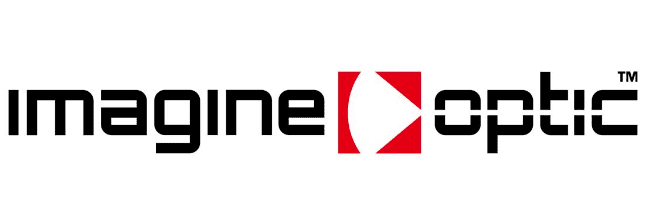Area served worldwide Number of employees 20-30 Founded 1996 | Revenue 3-4 M€ Headquarters Orsay | |
 | ||
Industry Wavefront sensor
Adaptive Optics
Optical metrology Founder Samuel Bucourt and Xavier Levecq Products Wavefront sensor, deformable mirror and adaptive optics systems | ||
Haso4 first wavefront sensor by imagine optic
Imagine Optic is a French company headquartered in Orsay, a southwestern suburb of Paris. It designs and manufactures a highly accurate Shack-Hartmann wavefront sensor and adaptive optics for research and industry. The company’s primary markets include optical metrology for industrial quality control, ultra high intensity lasers and microscopy in life science.
Contents
- Haso4 first wavefront sensor by imagine optic
- Rentr e eco t moignage imagine optic
- History
- Optical metrology
- High power lasers
- Biological imaging
- References
Rentr e eco t moignage imagine optic
History
Imagine Optic was founded in 1996 by Samuel Bucourt, an expert in dimensional metrology and Xavier Levecq, a specialist in wavefront measurements. Their combined expertise brings about new products that allow users to easily perform accurate wavefront measurements using Shack-Hartmann technology.
Imagine Optic also has divisions in Spain (COSINGO; since 2008), in the US (Axiom Optics; since 2010) and an office in China (since 2012).
Optical metrology
Wavefront sensors, based on the Shack-Hartman technology, have been widely used to perform highly accurate laser beam alignment, optical component characterization and optical system characterization. Wavefront sensors measure the amplitude and the phase of electromagnetic waves independently, giving intensity and wavefront profiles, respectively. The resulting absolute wavefront measurements are required in several applications, and absolute measurement accuracy is one of the key parameters for optical metrology.
Recently, highly accurate wavefront sensors have been applied for the characterization of the slope error, surface roughness and surface form of large optics such as X-ray mirrors. This is an alternative measurement technique to Long Trace Profilometer (LTP).
High-power lasers
Ultra high intensity lasers are now commonly used in several fields of physics research, including X-rays, wakefield acceleration, proton generation and ICF, with the common idea of intensely focusing a laser beam to energy densities that can reach 1022 W/cm2 on a target. To achieve such a goal, the laser beam typically passes through several amplification stages and is transported with larger and larger optical components. As a result, the beam is affected by thermal effects and optical aberrations which distort the wavefront and affect the focusing quality. This decreases light intensity on the target. Usually, both spectral and spatial phases are adaptively controlled in order to achieve the required focusing. Over the last 2 decades, adaptive optics for wavefront correction and beam shaping have been commonly used in laser facilities by means of a wavefront sensor that measures the spatial phase and a deformable mirror that corrects it. Adaptive Optics systems (AOs) are now a must have in ultra-high intensity facilities, with some of the most recent systems needing several AOs to function.. Recently Imagine Optic developed mechanical actuator based deformable mirrors to specifically address the phase correction in laser systems. Key points of this technology are the optical quality, the capacity of correction, great stability and linearity and simplified maintenance requirements.
Biological imaging
Aberrations induced by optical elements of a microscope and by biological samples distort the point spread function of the optical setup and significantly reduce the quality of the acquired images. Adaptive optics can correct these aberrations and considerably improve the contrast and resolution in different types of microscopy. The benefits of the use of Imagine Optic’s products have been demonstrated in single molecule super resolution methods, such as PALM/STORM Super-resolution microscopy, spinning disk and scanning confocal microscopy, Multiphoton fluorescence microscope, selective plane illumination microscopy (Light sheet fluorescence microscopy), and structured illumination microscopy.
